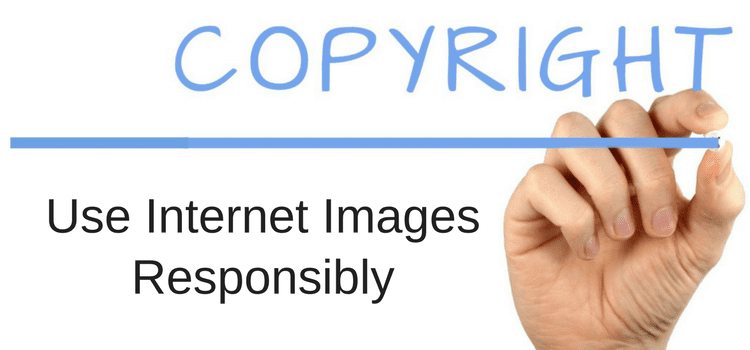
Using free images from the Internet in a blog post is as easy as doing a quick Google Image Search.
But how do you know if you can legally or at least responsibly use Internet images online on your blog or social media?
Is the image copyright protected or not?
Images with watermarks or a copyright statement embedded into the image are obviously protected, but what about the rest?
How to search and find free Internet images
Sure, you want to find free images to use in your blog posts.
But it’s vital that you make sure that you can use them legally.
Copyright infringement can lead to a lot of problems, including legal warnings or fines.
Here are a few ideas to ensure you are on the right side of the law.
Public domain images are a great option because they are free from copyright restrictions, allowing you to use and modify them freely.
You can easily find public domain resources on Wikipedia, categorized by topic, or on many government websites (.gov), which often offer public domain image collections.
Another alternative is Creative Commons images.
These come with some usage limitations set by the creator. Very often, attribution (giving credit to the artist) is required.
However, search engines like Google are the easiest tools for finding images.
But how can you be sure you can use an image you find? Here are a few tips to help you.
Step One. Search for a suitable image
Search for an image as you normally would on Google Image Search.
But then click on the Tools button. A new sub-menu will open. Click on Usage Rights.
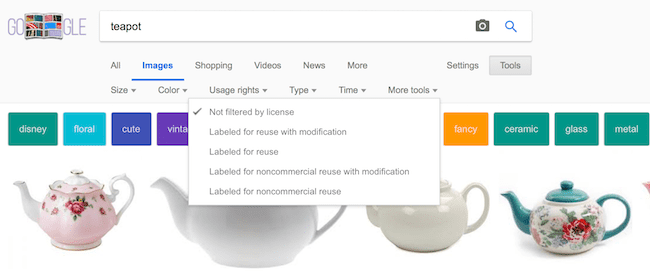
Step Two. Filter your image search
There is no filter by default.
You need to select Labeled For Reuse from the Usage Rights drop-down menu.
You also have other options.
When you do this, you will notice that the selection of images changes immediately.
It will remove all images protected by copyright from your results.
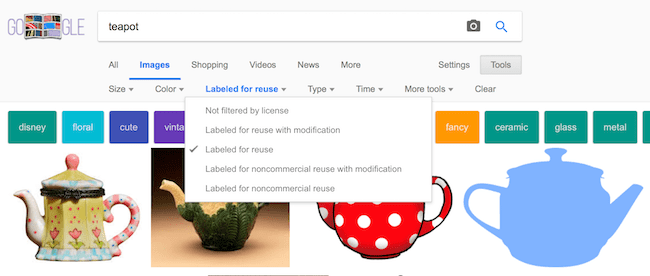
Update: Google Image Search now shows only two options: Creative Commons licenses and Commercial and other licenses. Instead of Labeled For Reuse, you should select Creative Commons licenses.
Step Three. Select your image and check the usage rights
Select the image that you would like to use, and you will see the options available for the image, along with a selection of similar images.
Up until Google changed its Image Search, it was possible to simply open any image in a new browser tab and copy the image regardless of usage rights.
This is now impossible, and Google’s move is a positive one in an attempt to protect usage rights for the copyright owner.
However, it is still possible to right-click and copy from this details screen, but I would advise against this.

Step Four. Check the details on the origin site
The best way to access your selected image is to click on the Site button.
This will take you to the site that holds the image. From there, you can make an informed decision about how to use the image and whether you need to add a credit.
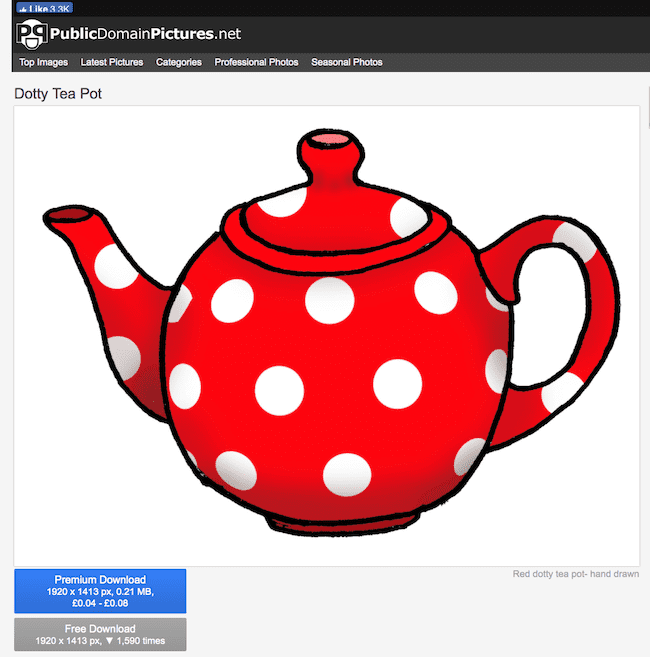
The image above clearly shows that a free download is offered for this image and that it was listed in Google as Labeled For Reuse.
While it doesn’t show in the screenshot above, there was a link on the page to a Creative Commons license page. The license details read:
The person who associated a work with this deed has dedicated the work to the public domain by waiving all of his or her rights to the work worldwide under copyright law, including all related and neighboring rights, to the extent allowed by law.
You can copy, modify, distribute, and perform the work, even for commercial purposes, all without asking permission.
Now you can be sure that there is no copyright license, and you can use these images legally.
How to find free images you can legally use
To avoid any possibility of copyright infringement, I recommend using Pixabay for images with Creative Commons licenses, so no attribution is necessary.
You can also use many other sites that offer free stock images that you can freely use.
I compiled a list of over 20 websites where you can get royalty-free images.
However, my preferred option is to create unique images whenever it is possible.
I use Canva, which is a free online app for creating images.
It is very easy to use and comes with an extensive library of free-to-use stock photos, line drawings, and design elements.
Of course, you can always take your own photos or use screenshots, as I have done in this article.
The days of using a search engine and copying images from the Internet are over.
You always need to consider copyright and whether you can use an image legally.
Not only is it lazy and wrong. There is always the possibility that it could land you in legal difficulty.
Always check. Always make sure and be responsible when using free images from the Internet or any other online content.
Related Reading: How To Create Unique Free Images For Your Blog Posts


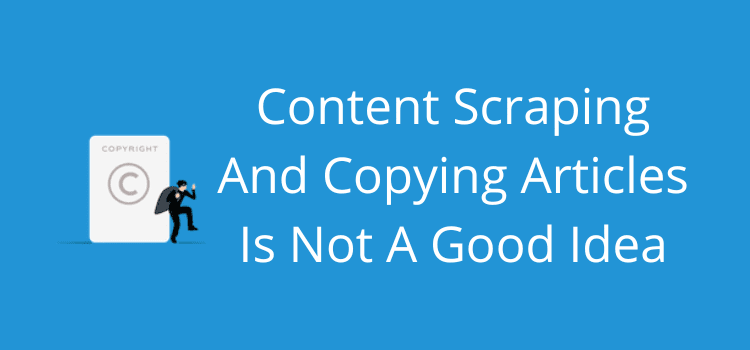
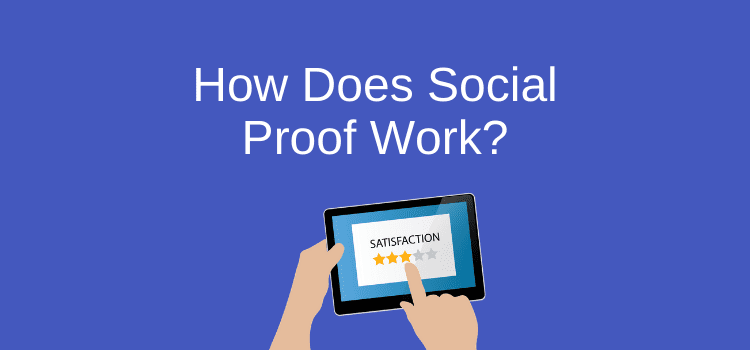
I use Dreamstime, which has tens of thousands (maybe more, I’m not sure) images of just about everything. Yes, you have to buy these images, but there are plenty of very cheap ones. I buy up a bundle of credits for about 15 bucks, and that usually lasts me a month of blog images. I never have to worry about getting a takedown notice this way, but it isn’t free.
Oh no, Derek!!!
The first thing you must assume is that everything is covered by copyright, just as everything you write is. It doesn’t matter if it is widely used; if you get hit by a DMCA takedown you could find your blog taken down, or worse, at the wrong end of a lawsuit. “At least I checked” is not a legal defence.
There are two kinds of images you can use.
Images (or any creative works) are in the Public Domain if they are not covered by copyright. That makes them free to use anyway you wish, including commercially. Since copyright isn’t actually a right, but a state imposed monopoly. copyright terms are different in different parts of the world. You can find out what the copyright terms to determine if the work is in the Public Domain.
You can also safely use images that have been Licensed To Share, The most common and most widely understood licenses are those published by the non-profit group Creative Commons. Their suite of licenses that allow creators to release their works with as many or as few restrictions as they choose.
There are growing repositories of images you can use ~ these have public domain images.
When using Google Image Search or Flickr search, you can use the advanced search functions to search for images with specific licenses.
Thanks for Morguefile ~ that’s a new one for me.
I guess I’m about due to write an updated article on this :)